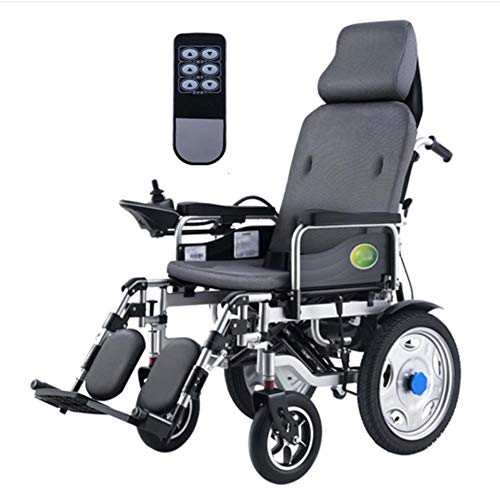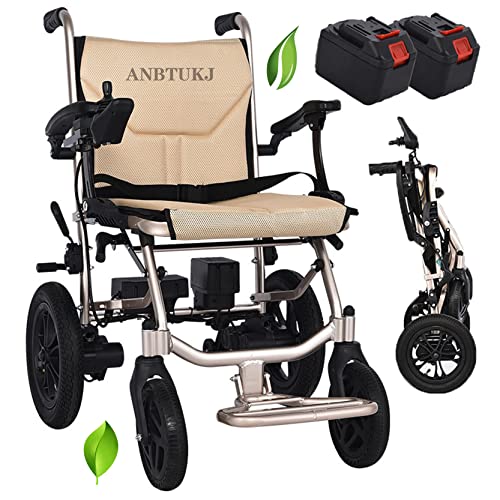Electric Wheelchair With Joystick The Process Isn't As Hard As You Thi…
페이지 정보

본문
 bariatric electric wheelchair uk Wheelchair With Joystick
bariatric electric wheelchair uk Wheelchair With JoystickJoysticks on power wheelchairs can improve their user-friendliness and independence. However, standard joysticks might not accommodate the specific needs of hand impairment.
This study evaluated the efficacy and satisfaction of customized power wheelchair joysticks fabricated with 3D printing technology. Modified power-mobility indoor driving assessment (PIDA), National Aeronautics and Space Administration task load index, and psychosocial impact of assistive devices scale were used for evaluation.
Control
The control system of a power wheelchair comprises two essential components that are the joystick and electronics (also known as the controller). The standard joysticks are placed on the left or the right side of the wheelchair, while more sophisticated rehab chairs come with swing-away mounts which allow the joystick to move into the middle of the seat.
The way a joystick is mounted and used is vital to its effectiveness for a customer. For instance when a person has a significant amount of tremors, then it is vital to ensure the joystick is designed in such a way that these actions will not cause accidental activations of the chair. The standard EPW joysticks are typically proportional input devices that respond to the amount of deflection on the gimbal in order to control the movement of the chair (similar to an accelerator pedal or video game controller).
There are a variety of alternatives to control options for power wheelchairs, which require very little force to activate. Controls for switches, sip-and-puff, head arrays, and chin controls are all available. Certain of these control systems require an additional interface to connect to the wheelchair. However, many of them are compatible with new joysticks that integrate Bluetooth into the handles.
Some of the standard wheelchair joysticks have a screen on them to show the status of the system and provide feedback to the user, which is particularly beneficial for those with visual or cognitive impairments. Other advanced joysticks have the capability of controlling a variety of accessories like environmental controls and even a tablet or TV.
No matter what technology is used the joystick is useful if it's comfortable for the user to use. This is why it is essential to consider the size and position of the buttons on a joystick to ensure they are easy to access. Additionally, it is important to consider the sensitivities of the joystick, which can be adjusted to a variety of levels according to the needs of each individual user.
Comfort
A joystick-controlled powerchair has many advantages not accessible with manual chairs. They reduce fatigue caused by operational factors and permit longer travel distances over manual wheelchairs. They can be utilized in areas that have less space or terrain that is more difficult like outdoor slopes and uneven surfaces. With this added freedom users can enjoy an ease of movement that brings new life to their lives and reminds them of how great it is to be independent again.
A variety of power wheelchairs are offered with a wide range of options. The number of bells and whistles that a particular model has will depend on what the user wants and requires. Some of the most popular features are:
Controls that can be customized on an electric wheelchair equipped with a joystick is possible to meet the needs of each individual. This includes the design and location of the knob, ball, or handle. Some joysticks are located at the end of the armrest of the driver's chair While others are set on the front or rear of the seat to make it easier for the an attendant to reach. Some joysticks can be mounted on the side for people who have limited shoulder range or a weakness in their muscles.
Other features are more personalised, such as the style and size of the joystick's screen. Some are backlit, or in a color that is easier to read for those with low vision. Some models also have additional modes that provide visual or audio cues to aid in navigation. They can also offer clocks, odometers, and battery charge indicators.
A joystick's ability to maneuver within a narrow turning radius is also important. The most effective models will have a small turning radius, making it easier to navigate obstacles and narrow spaces, such as hallways. The tight turning radius also makes it easier to maneuver in public spaces and in stores. This tight turning circle is especially beneficial for those with mobility wheelchair electric issues, such as cerebral palsy or other issues with mobility, like multiple sclerosis, ALS and Huntington's Disease, spinal cord injury or brainstem stroke.
Safety
Power Chairs For Sale wheelchairs are designed with safety in mind. They have reliable brake systems that can slow the speed rapidly when the consumer presses the joystick control. They also have anti-tip wheels at the rear that keep the chair from slipping backward.
The most common type of joystick is a proportional control, which is similar to accelerator pedals and video game controllers in that the more the joystick is moved away from its center the speed at which the wheelchair moves. These types of joysticks require intact proprioception as well as finger dexterity to work effectively. The standard joysticks are positioned on the armrest. However there are several special controls that place the control on the side or middle of the seat.
Some people may not have the strength to deflect a joystick's handle, even with special rigging. Some people with spasticity may have issues because their muscles can become stiff or atrophy. In these instances, it may be better to use a head-control device that converts the movements of the user's body into the appropriate commands for the wheelchair.
Another thing to take into consideration is the size and location of buttons on the joystick. If the buttons are far in the front or difficult to reach, they may interfere with the position of the user and cause a strain on the hands. If the joystick is placed too far back, it could be difficult to move the chair or turn the wheels.
Additionally, an light electric wheelchairs chair must always be used with a seatbelt secured. Seatbelts must always be fastened when using an off road electric wheelchair wheelchair. The fastest wheelchairs can reach speeds of 8mph. It is also essential to charge batteries regularly, every at night, if you can. This will ensure that they have a longer life and maintain their effectiveness. It is also recommended to have your chair maintained regularly to ensure that all components are working properly.
 Accessories
AccessoriesThe joystick is a major component of any power chairs uk wheelchair, and there are many accessories that can be added to improve its performance. These range from basic switches to more advanced interfaces that can connect to communication devices or even external environmental control units. Higher-end power wheelchairs will often have a variety of controller components that are able to meet the requirements of different users. For example an unexpandable controller will typically only accept the proportional joystick as an input device while an expandable controller can allow puff and sip controls, special switches and head array systems. Some of the advanced controllers are able to operate up to two power seating actuators, which can alter the seat's direction and angle of the seat.
The most basic kind of joystick commonly prescribed in the clinic is an inverse control, often called a motion sensing joystick. This type of joystick like automobile accelerator pedals and video game controllers responds to the force that is exerted on the stick by increasing its output (i.e. The speed of the wheelchair increases as the stick moves away from the center. This requires a good deal of dexterity and a healthy sense of proprioception to be able to use it effectively.
The technology that is used today can compensate for minor variations in amplitude when EPW driving. However, it's not able to recognize and adjust for more extreme unintentional motions like those that cause larger amplitude tremors, or involuntary movements that aren't associated with conscious intention like athetosis.
Most wheelchairs have a number of parameters that can be programmed or customized usually with the assistance of a medical professional. These parameters can include changing the torque produced by the motor, altering the speed that the chair moves and setting the dead zone which is the amount within which the EPW is unable to produce an output. Some controllers also have the ability to store backup programs, which is useful for a healthcare professional to keep in case of an emergency or for patients with varying symptoms.
- 이전글The biggest Drawback in Issue Comes All the way down to This Phrase That Starts With "W" 24.11.13
- 다음글The Most Significant Issue With Skoda Car Keys, And What You Can Do To Fix It 24.11.13
댓글목록
등록된 댓글이 없습니다.